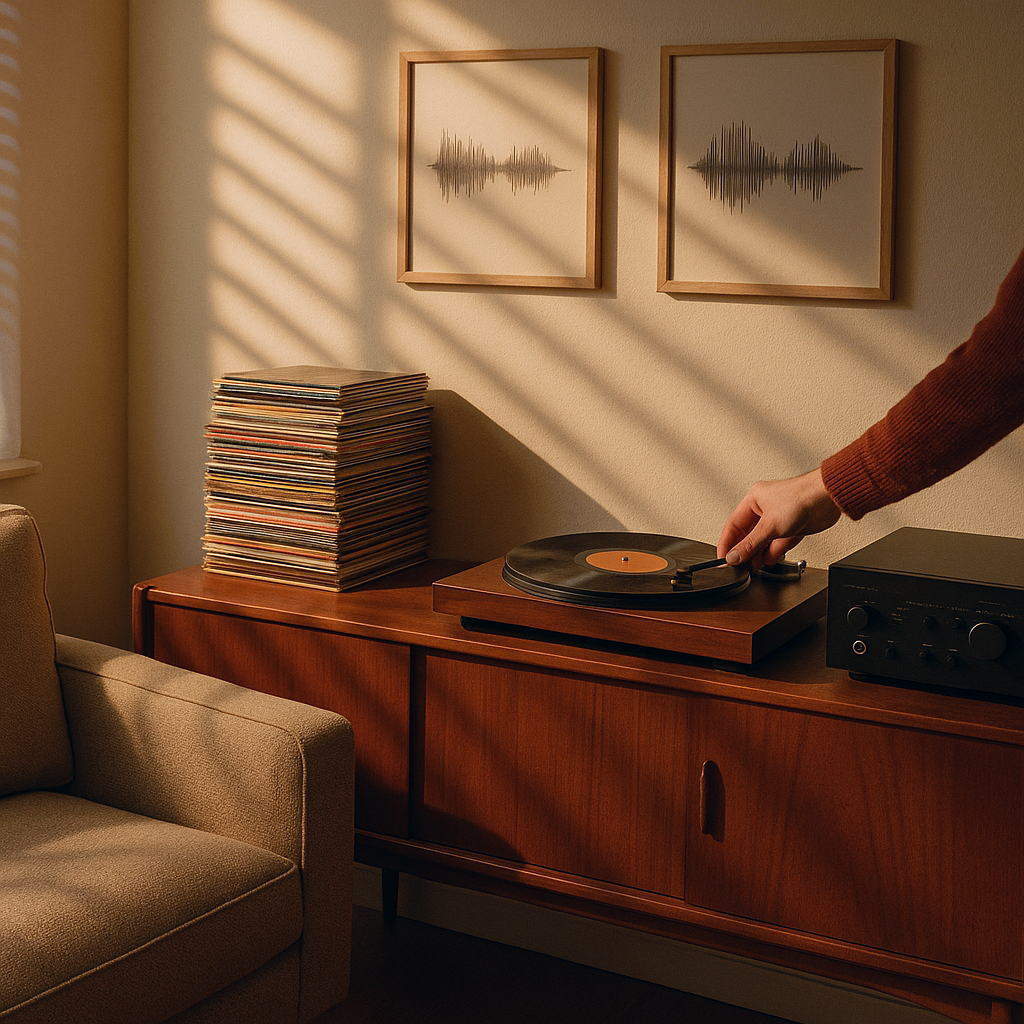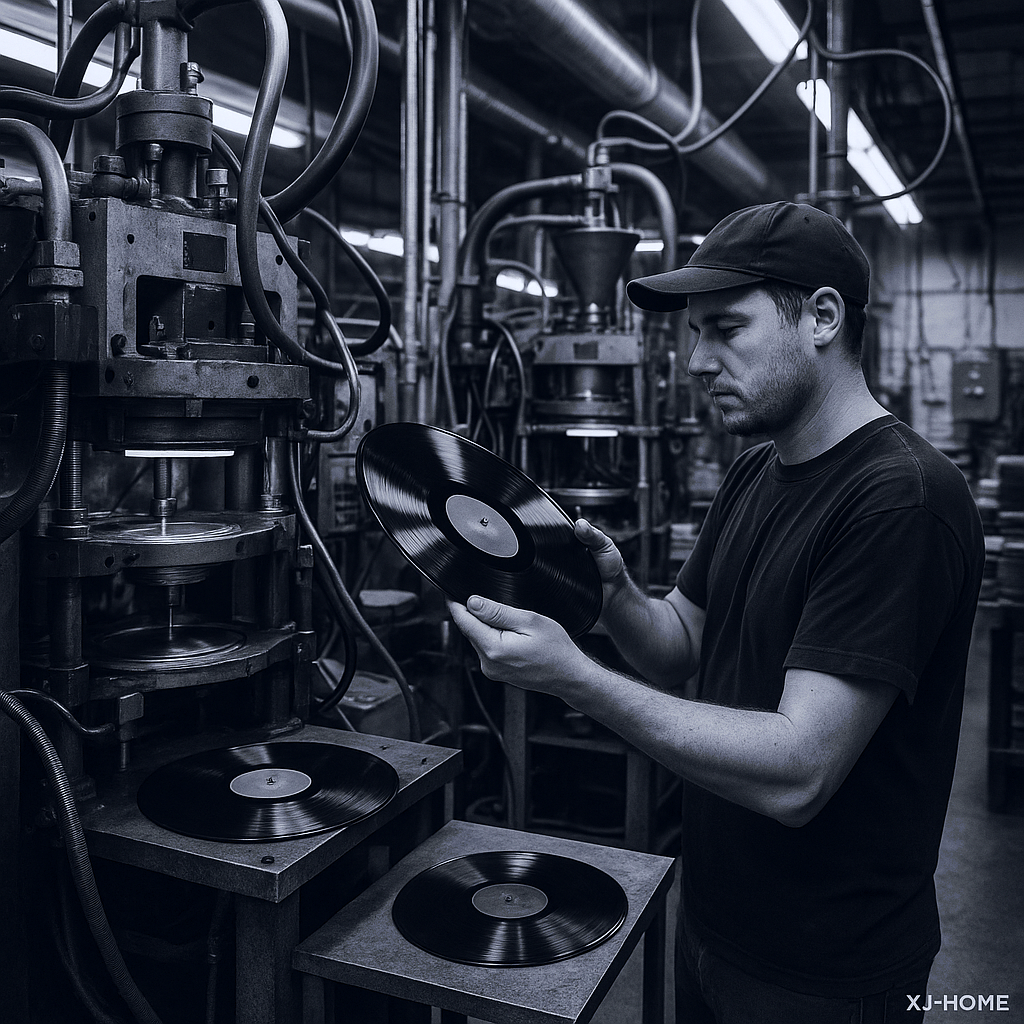So, you've got your turntable set up, your tonearm is balanced, and you're enjoying your vinyl. But have you ever wondered if your records are spinning at precisely the right speed? A turntable running too fast will make your music sound slightly sharp and rushed, while one running too slow will make it sound sluggish and flat. For the discerning ear, even minor speed inaccuracies can rob music of its intended pitch, tempo, and emotional impact.
Enter the humble stroboscope disc and a suitable light source – simple yet remarkably effective tools for verifying your turntable's rotational speed. This isn't just for obsessive audiophiles; ensuring correct speed is a fundamental aspect of faithful music reproduction.
What is a Stroboscope Disc and How Does it Work?
A stroboscope disc is a flat disc, often made of paper, card, or plastic, with a series of precisely printed radial lines or dots around its edge. These markings are designed for specific speeds (e.g., 33⅓ RPM and 45 RPM) and to work with the frequency of your mains electricity (60Hz in the US, 50Hz in many other parts of the world).
The magic happens due to a visual illusion. When the platter spins at the correct speed, and the disc is illuminated by a light source flickering at the mains frequency (like an incandescent bulb, a neon lamp, or a dedicated strobe light), the corresponding set of lines on the disc will appear to be stationary.
-
If the lines appear to slowly drift clockwise: Your turntable is running slightly too fast.
-
If the lines appear to slowly drift counter-clockwise: Your turntable is running slightly too slow.
-
If the lines are perfectly still: Congratulations, your speed is spot on!
This effect occurs because the flickering light "freezes" the lines in the same position during each brief flash, assuming the platter has rotated the exact distance between markings in the interval between flashes.
Why Accurate Speed Matters
The correct pitch and tempo are integral to the musical performance. Imagine your favorite vocalist suddenly sounding like they've inhaled a bit of helium, or a powerful drum solo losing its urgency – that's what incorrect speed can do. While minute variations might be imperceptible to some, for those seeking an authentic listening experience, speed accuracy is non-negotiable. It’s about respecting the artist's creation and the recording engineer's meticulous work. This dedication to faithful reproduction is a core tenet we cherish at XJ-HOME, where every detail contributes to the overall sonic tapestry.
How to Use a Stroboscope Disc: A Simple Step-by-Step
-
Acquire a Stroboscope Disc:
-
Many turntables actually come with one printed on the platter itself or on the rubber mat. Look for fine lines around the edge.
-
You can purchase dedicated stroboscope discs from hi-fi accessory retailers.
-
Printable versions are available online (like the ones often found on Vinyl Engine's tools section – ensure you print it at the correct scale and for your mains frequency!). Make sure it's for the correct mains frequency (60Hz for the US).
-
-
Choose Your Light Source:
-
Incandescent Bulb: An old-fashioned filament bulb works well because its light output naturally flickers with the AC mains frequency. A desk lamp with a 40-60W incandescent bulb is ideal.
-
Neon Lamp: Small neon indicator lamps also flicker at mains frequency.
-
Dedicated Strobe Light: Some audiophile strobe lights are available, offering a very precise flicker.
-
LED Lights & Fluorescent Lights (Caution!): Many modern LED bulbs and some fluorescent lights do not flicker directly with the mains frequency in the same way (they often have internal electronics to smooth the light output or operate at much higher frequencies). These may not work correctly for stroboscopic testing unless they are specifically designed as strobe lights. If you're using an LED, it needs to be one that does pulse at mains frequency or a dedicated strobe.
-
-
Prepare Your Turntable:
-
Place the stroboscope disc on your platter, just like a record.
-
Ensure your turntable is on a stable, level surface.
-
Turn on your turntable and select the speed you want to test (e.g., 33⅓ RPM). Let it run for a minute or two to stabilize.
-
-
Observe the Markings:
-
Dim the room lights if possible to make the stroboscope effect more apparent.
-
Position your chosen light source so it illuminates the stroboscope disc markings clearly.
-
Look at the set of lines corresponding to the speed you've selected (and your mains frequency).
-
Observe the apparent motion (or lack thereof) of the lines.
-
What If Your Speed Isn't Perfect?
Don't panic! Here's what to consider:
-
Turntables with Pitch Control:
Many turntables, especially direct drive models and some belt drives, have a pitch control adjustment. This is often a small knob or slider that allows you to make fine adjustments to the platter speed. If your turntable has this feature, you can gently adjust it while observing the stroboscope until the lines appear stationary.
-
Belt Drive Turntables (No Obvious Pitch Control):
-
Belt Condition: An old, stretched, or incorrect belt is a common cause of speed issues. Replacing the belt might be all that's needed.
-
Lubrication: The platter bearing or motor might need cleaning and lubrication. Consult your turntable manual; this can sometimes be a DIY job, but proceed with caution.
-
Motor Adjustment (Advanced): Some belt drive turntables have internal potentiometers on the motor control board for speed adjustment. This is generally a task for experienced technicians or very confident DIYers, as it involves working with electronics.
-
-
Direct Drive Turntables (No Obvious Pitch Control):
While many have external pitch controls, if yours doesn't and the speed is off, it might indicate an issue with the motor's control circuitry. This usually requires professional servicing.
-
When to Seek Professional Help:
If you're not comfortable making internal adjustments, or if simple fixes don't resolve the issue, it's always best to consult a qualified turntable technician. They have the tools and expertise to diagnose and correct speed problems accurately.
The Satisfaction of Precision
Using a stroboscope is a simple way to gain valuable insight into your turntable's performance. Achieving correct speed ensures you're hearing your vinyl collection as accurately as possible, unlocking the full richness and intended artistry of each recording. It's a small step that can make a big difference to your listening pleasure.





Leave a comment
All comments are moderated before being published.
This site is protected by hCaptcha and the hCaptcha Privacy Policy and Terms of Service apply.